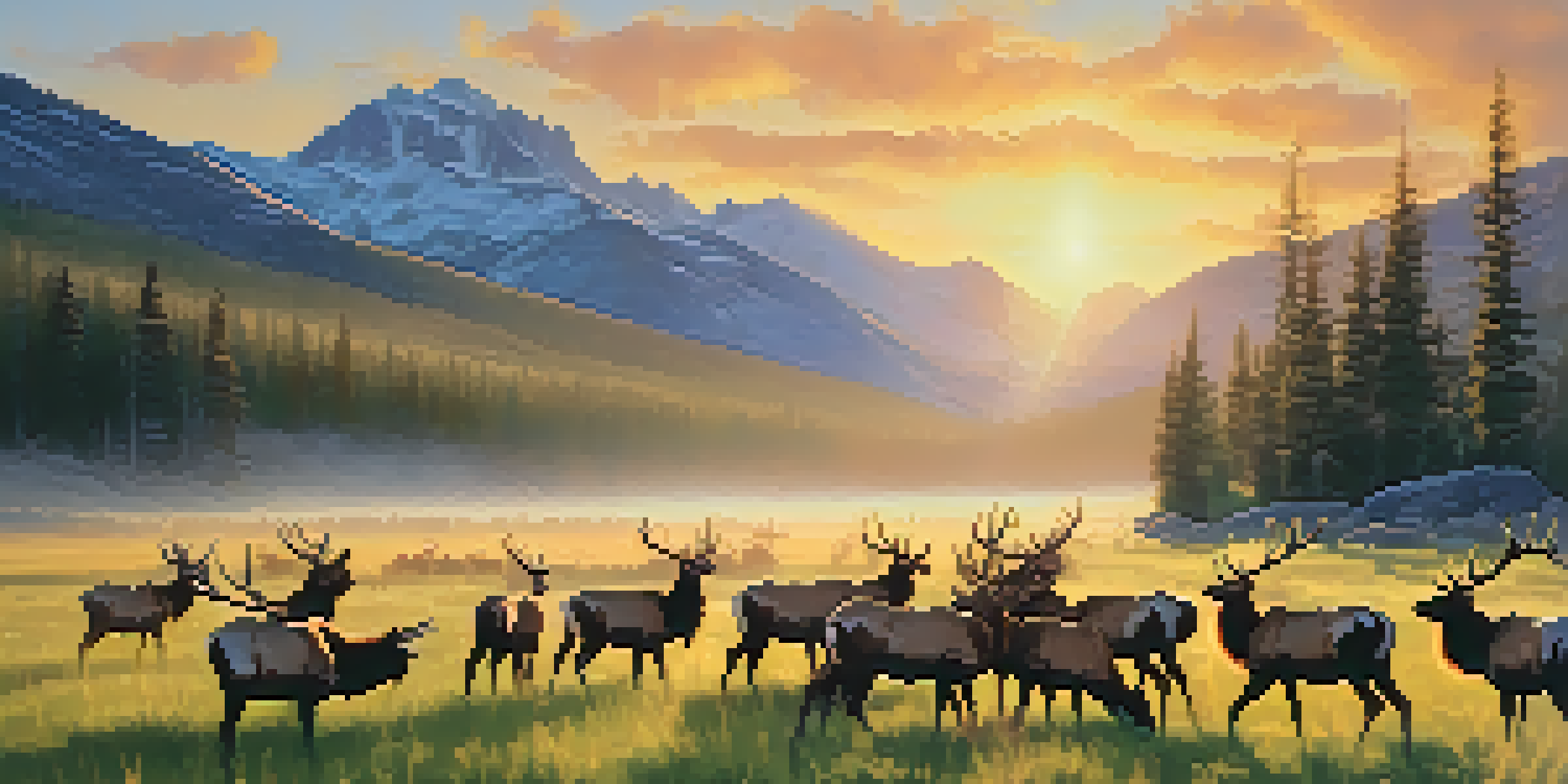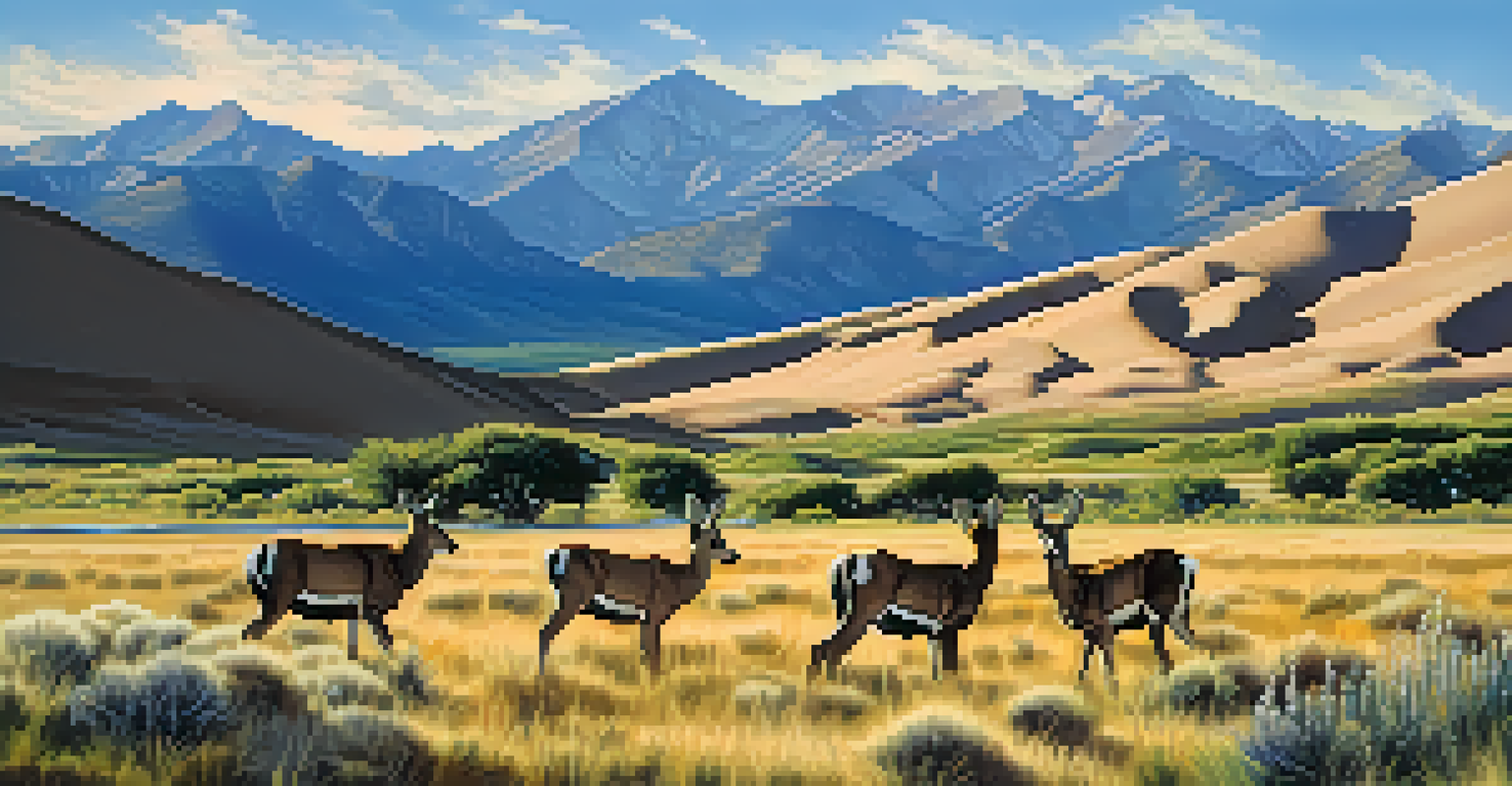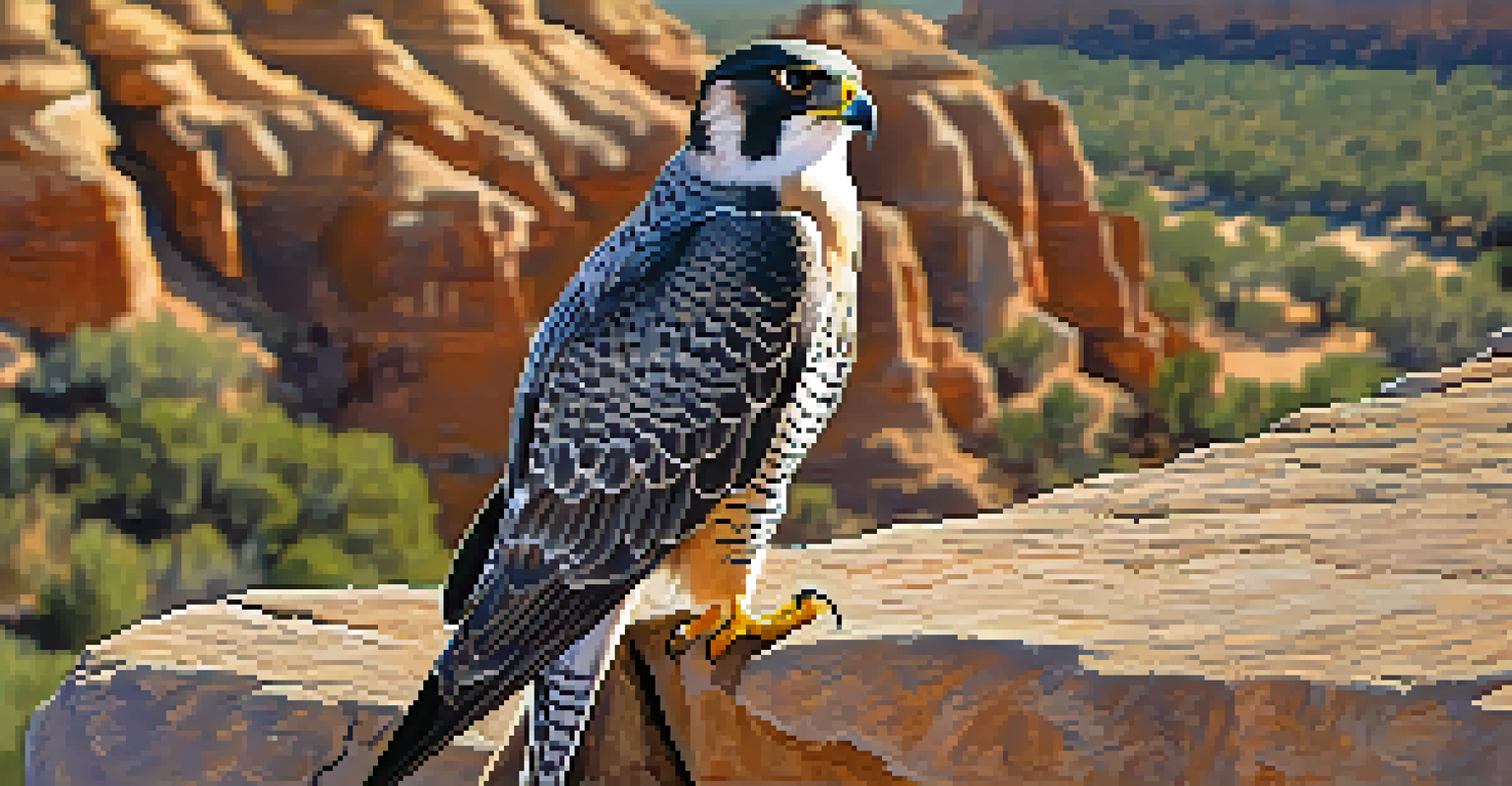Exploring Colorado's National Parks for Wildlife Viewing

Introduction to Colorado's Wildlife and National Parks
Colorado is home to some of the most breathtaking national parks in the United States, ranging from the towering peaks of Rocky Mountain National Park to the wide-open spaces of Mesa Verde. These parks provide not just stunning views but also a prime opportunity for wildlife viewing. Each park boasts diverse ecosystems that support a variety of wildlife, making it a haven for nature enthusiasts.
In every walk with nature one receives far more than he seeks.
Whether you're an avid bird watcher, a passionate photographer, or simply someone who enjoys observing animals in their natural habitat, Colorado's national parks offer something for everyone. From majestic elk to playful otters, the wildlife is as varied as the landscapes. Understanding the best times and locations for wildlife spotting can enhance your experience significantly.
In this article, we will explore the best parks for wildlife viewing in Colorado, providing tips on what to look for and when to visit. So grab your binoculars and let’s dive into the wild side of Colorado!
Rocky Mountain National Park: A Wildlife Wonderland
Rocky Mountain National Park, with its towering peaks and alpine lakes, is a prime spot for wildlife viewing. Here, you can expect to see elk, deer, and a variety of birds, especially during the early morning or late evening hours. The park's diverse habitats, from meadows to forests, provide homes for these animals, making it a great place to spot them in their natural environment.

One of the highlights of visiting Rocky Mountain is the opportunity to see the majestic elk, especially during the fall rutting season when males are in full display, showcasing their impressive antlers. Additionally, the park is home to smaller critters like marmots and pikas, which can often be seen scampering around the rocky terrains. Bringing a pair of binoculars can enhance your viewing experience, allowing you to observe these animals without disturbing them.
Explore Diverse Wildlife Parks
Colorado's national parks, such as Rocky Mountain and Mesa Verde, offer unique ecosystems that support a variety of wildlife, making them ideal for nature enthusiasts.
While exploring, consider taking the Trail Ridge Road, which offers stunning vistas and access to various trailheads. With a little patience and a keen eye, you'll find that Rocky Mountain National Park is truly a wildlife wonderland waiting to be explored.
Mesa Verde National Park: A Different Kind of Wildlife
Mesa Verde National Park is renowned for its ancient cliff dwellings, but it also offers unique wildlife viewing experiences. The park's canyons and mesas are home to a variety of species, including mule deer, coyotes, and even the elusive mountain lion. The diverse terrain creates different habitats, making it an interesting place to observe wildlife throughout the year.
The Earth has music for those who listen.
Birdwatchers will delight in the array of avian life here, including the striking peregrine falcon and numerous songbirds. Early mornings or late afternoons are the best times to catch glimpses of these feathered friends. As you walk the trails, keep an ear out for rustling leaves or calls that might lead you to a hidden animal in the brush.
Exploring the park not only allows you to enjoy the wildlife but also to appreciate the rich history of the Ancestral Puebloans. Combining cultural history with wildlife observation makes Mesa Verde a fascinating destination for those looking to connect with both nature and history.
Great Sand Dunes National Park: A Unique Ecosystem
Great Sand Dunes National Park offers a unique landscape that supports a surprising variety of wildlife. The contrast of the expansive sand dunes with the surrounding mountains creates a distinctive environment where you can find animals like kit foxes, mule deer, and even the occasional black bear. The park’s wetlands and grasslands also attract numerous bird species, making it a hotspot for birdwatchers.
One of the most interesting aspects of Great Sand Dunes is how the shifting sands create different microhabitats. This means that wildlife can be found in unexpected places, and exploring the area can yield delightful surprises. Early mornings or late afternoons are perfect for spotting wildlife, as many animals are more active during cooler parts of the day.
Best Times for Wildlife Viewing
Early mornings and late afternoons are the optimal times for spotting active wildlife across Colorado's parks, enhancing your viewing experience.
Don't forget to check out the Medano Creek, which flows alongside the dunes in spring, attracting various wildlife. As you stroll along the creek, listen for the sounds of nature and keep your eyes peeled for tracks in the sand—each tells a story of the wildlife that calls this unique park home.
Black Canyon of the Gunnison National Park: A Hidden Gem
Black Canyon of the Gunnison National Park is often overlooked, but it boasts incredible opportunities for wildlife viewing. The steep cliffs and narrow canyon create a unique habitat where you can spot animals like bighorn sheep, rock squirrels, and various raptors soaring above. The park’s rugged terrain makes it a haven for those who appreciate the wild side of nature.
The best times for wildlife viewing here are in the early morning or late afternoon when animals are most active. The park's remote location means that you'll often feel like you're the only one witnessing the beauty of these creatures in their natural habitat. With patience and a bit of luck, you'll find that the wildlife is as breathtaking as the views.
Exploring the park's trails not only offers chances for wildlife sightings but also allows you to experience the stunning geology of the canyon. Each visit can reveal new surprises—both in terms of wildlife and the park's dramatic landscapes, making it a truly enchanting place to explore.
Wildlife Photography Tips for Your Colorado Adventure
If you're planning to capture the beauty of Colorado's wildlife through photography, there are a few tips to keep in mind. First, always respect wildlife by maintaining a safe distance. A good rule of thumb is to stay at least 25 yards away from most animals and 100 yards from bears and wolves. This ensures both your safety and the animals' wellbeing.
Timing is essential in wildlife photography. Early mornings and late afternoons provide the best lighting and the most active wildlife. Bring a good zoom lens and practice patience; sometimes, the best shots come after waiting quietly for the perfect moment. Remember to keep your camera settings ready to adapt to changing light conditions and movement.
Capture Nature Responsibly
When photographing wildlife, maintain a safe distance and enjoy the natural surroundings to create lasting memories beyond just the images.
Lastly, don’t forget to enjoy the experience beyond the lens. While it’s tempting to focus solely on getting that perfect shot, take a moment to soak in the sights and sounds of nature. This connection with the wildlife and environment can enhance your adventure and provide memories that last a lifetime.
Planning Your Wildlife Viewing Trip in Colorado
When planning your wildlife viewing trip in Colorado's national parks, it's essential to consider the best times to visit. Each season brings different wildlife activity; for instance, spring is often the best time for spotting newborn animals, while fall is prime for observing mating behaviors. Research the specific parks you plan to visit to understand their seasonal highlights.
Don’t forget to check for any park regulations regarding wildlife viewing. Each park has guidelines to ensure the safety of both visitors and wildlife. For example, staying on designated trails and not feeding animals are crucial rules to follow. Being a responsible visitor helps preserve the natural environment for future generations.

Lastly, pack appropriately for your adventure! Bring layers of clothing to prepare for changing weather conditions and don’t forget essentials like water, snacks, and a good pair of binoculars. With careful planning, your wildlife viewing experience in Colorado can be both exciting and memorable.
Concluding Your Wildlife Adventure in Colorado
As you wrap up your wildlife adventure in Colorado, take a moment to reflect on the incredible experiences you've had. From the majestic elk in Rocky Mountain National Park to the unique ecosystems of Great Sand Dunes, each park offers its own charm and wildlife. These moments not only connect you with nature but also deepen your appreciation for the environment.
Consider sharing your experiences and photographs with friends and family. By doing so, you can inspire others to explore Colorado's national parks and appreciate the beauty of wildlife. Sharing your adventures can also foster a greater awareness of conservation efforts needed to protect these natural habitats.
Finally, keep in mind that every trip to Colorado's national parks can bring new surprises. Wildlife is unpredictable, and each visit can yield different encounters. So, whether you’re a first-time visitor or a seasoned adventurer, there’s always something new to discover in the wild heart of Colorado.